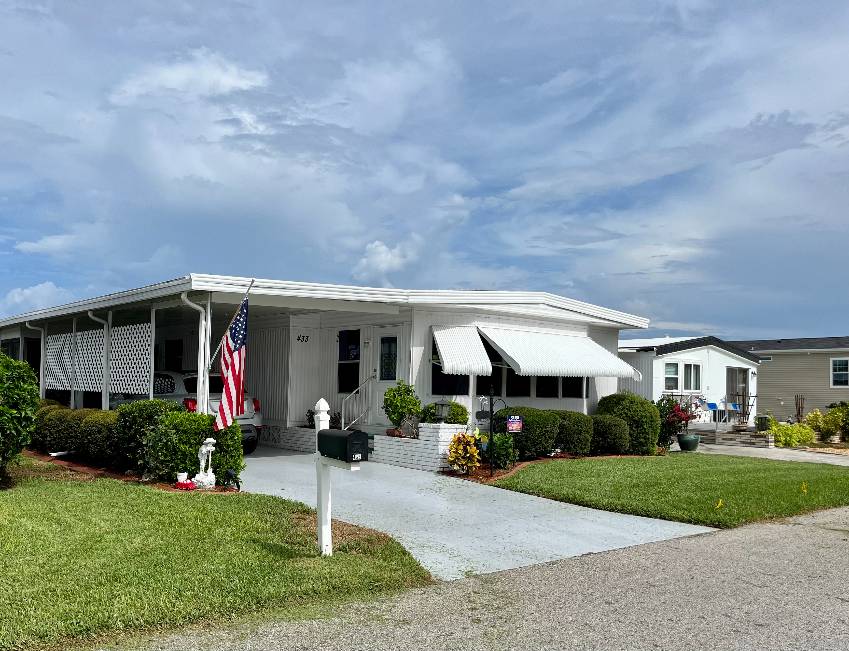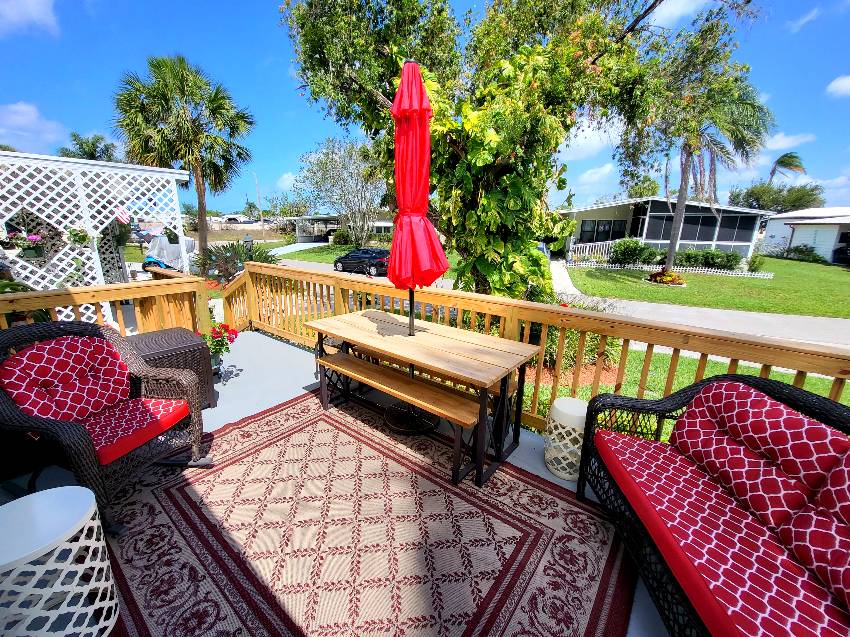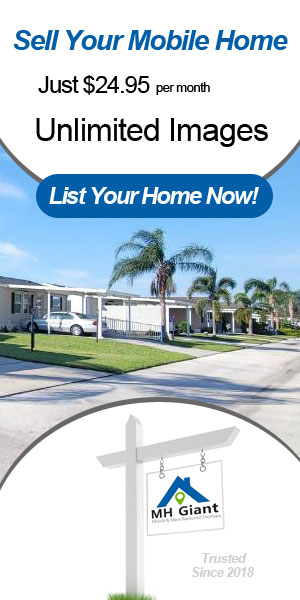Table of Contents
A Buyer’s Guide to Mobile and Manufactured Homes
In today’s dynamic housing market, mobile and manufactured homes offer an affordable and flexible alternative to traditional housing. Whether you’re a first-time homebuyer, looking to downsize, or seeking a second home, understanding the ins and outs of mobile and manufactured homes is crucial to making an informed decision. This guide will walk you through everything you need to know about buying a mobile or manufactured home, from understanding the differences between the two to financing options, site considerations, and maintenance.
Understanding Mobile vs. Manufactured Homes
Before diving into the buying process, it’s important to understand the difference between mobile and manufactured homes, as these terms are often used interchangeably but actually refer to different things.

- Mobile Homes: Technically, “mobile home” refers to homes built before June 15, 1976, when the U.S. Department of Housing and Urban Development (HUD) implemented new safety and construction standards. These homes were typically more mobile and could be easily relocated.
- Manufactured Homes: These are homes built after June 15, 1976, in compliance with HUD’s building codes. Manufactured homes are constructed in a factory setting and then transported to the site. They are built on a permanent chassis and can range from single-section to multi-section homes. Unlike mobile homes, manufactured homes are not designed to be moved frequently and are typically placed on a permanent foundation.
Benefits of Mobile and Manufactured Homes
- Affordability: One of the most significant advantages of buying a mobile or manufactured home is affordability. These homes often cost less per square foot than traditional site-built homes, making them a popular choice for first-time buyers, retirees, and those looking for a more affordable housing option.
- Customizability: Many manufactured homes offer a range of customization options, allowing buyers to choose floor plans, finishes, and features that suit their needs and preferences. This flexibility allows you to tailor the home to your lifestyle.
- Quick Construction: Because manufactured homes are built in a factory, the construction process is typically faster and less susceptible to weather delays than site-built homes. This can result in a quicker move-in timeline.
- Energy Efficiency: Many modern manufactured homes are designed with energy efficiency in mind. Newer models often include energy-efficient windows, insulation, and appliances, which can help reduce utility costs over time.
- Quality and Safety Standards: Manufactured homes built after 1976 must meet stringent HUD standards, ensuring they are safe and well-constructed. This includes regulations on structural design, construction, fire safety, and energy efficiency.
Steps to Buying a Mobile or Manufactured Home
- Determine Your Budget
Before you start shopping, it’s essential to establish a budget. Consider your income, savings, and financing options to determine how much you can afford to spend. Remember to factor in additional costs such as mobile home insurance, taxes, and lot rent if you plan to place your home in a mobile home community. - Choose the Right Type and Size
Mobile and manufactured homes come in various sizes and layouts, from single-wide to double-wide to triple-wide options. Think about your space needs, the number of bedrooms and bathrooms required, and any special features you desire. If you’re looking for a temporary living solution or plan to move the home frequently, a single-wide might be suitable. For a more permanent solution with more space, a double-wide or triple-wide might be better. - Find a Reputable Dealer or Manufacturer
Purchasing a mobile or manufactured home is a significant investment, so working with a reputable dealer or manufacturer is crucial. Look for companies with positive customer reviews and a strong reputation for quality and service. Visiting a few dealerships or showrooms can help you compare models, prices, and customization options. - Consider the Location and Site Options
Deciding where to place your home is a critical step. You can place a manufactured home on privately owned land, in a mobile home community, or in a leased lot. Each option has its pros and cons:- Privately Owned Land: Offers more control over the property and the ability to customize the landscape. However, it may require additional expenses for land preparation, utilities, and permits.
- Mobile Home Community: A mobile home community provides amenities, community events, and a sense of neighborhood. However, there will be monthly lot rent fees and community rules to follow.
- Leased Lot: Similar to a mobile home community but without the community feel. Leasing a lot may be less expensive, but you’ll still have to adhere to the landlord’s rules.

- Understand Zoning Laws and Restrictions
Before buying, it’s crucial to understand the zoning laws and restrictions in the area where you plan to place the home. Some regions have specific rules regarding the placement of manufactured homes, including size restrictions, foundation requirements, and aesthetic guidelines. Check with local authorities or your dealer to ensure your plans comply with local laws. - Financing Your Purchase
Financing a mobile or manufactured home can be different from financing a traditional home. Here are some common options:- Personal Property Loan (Chattel Mortgage): Used when the home is not permanently attached to land. This type of loan typically has a shorter term and higher interest rates than traditional mortgages.
- FHA and VA Loans: The Federal Housing Administration (FHA) and Veterans Affairs (VA) offer loan programs specifically for manufactured homes that meet certain criteria. These loans may have more favorable terms and lower down payments.
- Conventional Mortgage: If the manufactured home is permanently affixed to a foundation and classified as real property, you may qualify for a conventional mortgage with better interest rates and terms.
- Dealer Financing: Some dealers offer in-house financing or can connect you with lenders specializing in manufactured home loans. However, compare interest rates and terms to ensure you’re getting the best deal.
- Inspect the Home
Before finalizing your purchase, it’s important to have the home inspected by a professional. An inspection will ensure the home is in good condition, meets all safety standards, and is free of major defects or issues. If you’re buying a used mobile home, this step is even more critical to avoid costly repairs down the line. - Plan for Delivery and Installation
Once you’ve purchased your home, you’ll need to arrange for delivery and installation. Most manufacturers or dealers will provide delivery and set-up services, but it’s essential to clarify what is included in the price. Proper installation is crucial to ensuring the home is level, secure, and compliant with local codes. - Understand the Warranty
Manufactured homes typically come with warranties covering different components, such as structural elements, plumbing, and electrical systems. Review the warranty carefully to understand what is covered, for how long, and any required maintenance to keep the warranty valid. - Prepare for Ongoing Maintenance and Costs
Like any home, manufactured homes require regular maintenance to keep them in good condition. This can include tasks such as checking the roof for leaks, maintaining the HVAC system, and ensuring the home is properly insulated. Be prepared for ongoing costs like utilities, lot rent (if applicable), insurance, and property taxes.
Summary
Buying a mobile or manufactured home is a significant investment that requires careful consideration and planning. By understanding the differences between mobile and manufactured homes, setting a budget, choosing the right type and location, and exploring financing options, you can make an informed decision that suits your lifestyle and financial situation.
Remember to work with reputable dealers, understand local zoning laws, and inspect the home thoroughly before purchase. With the right preparation and research, owning a mobile or manufactured home can provide a comfortable, affordable, and flexible living solution for years to come.
Whether you’re a first-time homebuyer or looking to downsize, this guide should provide you with a comprehensive understanding of what to consider when buying a mobile or manufactured home. Happy house hunting!

 Remember to work with reputable dealers, understand local zoning laws, and inspect the home thoroughly before purchase. With the right preparation and research, owning a mobile or manufactured home can provide a comfortable, affordable, and flexible living solution for years to come.
Remember to work with reputable dealers, understand local zoning laws, and inspect the home thoroughly before purchase. With the right preparation and research, owning a mobile or manufactured home can provide a comfortable, affordable, and flexible living solution for years to come.